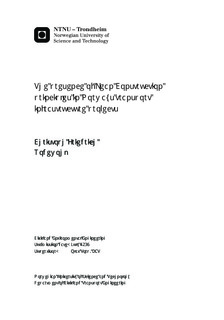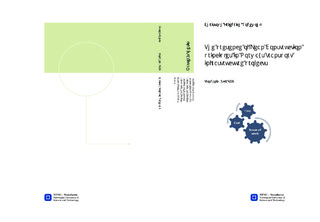| dc.contributor.advisor | Torp, Olav | nb_NO |
| dc.contributor.author | Rodewohl, Christoph Friedrich | nb_NO |
| dc.date.accessioned | 2014-12-19T11:35:19Z | |
| dc.date.available | 2014-12-19T11:35:19Z | |
| dc.date.created | 2014-10-22 | nb_NO |
| dc.date.issued | 2014 | nb_NO |
| dc.identifier | 757585 | nb_NO |
| dc.identifier | ntnudaim:11701 | nb_NO |
| dc.identifier.uri | http://hdl.handle.net/11250/233282 | |
| dc.description.abstract | The construction sector is tainted with a bad image and has a significant impact on the economic situation of a country. Claims for better and optimized processes are existent. The special properties of construction projects, especially their uniqueness, require a holistic understanding and make an adoption of the project team regarding the concerned context essential. A new way of thinking develops to cope with the complex and dynamic features. Lean has its roots in the manufacturing processes of the car industry. The body of literature of the approach called lean construction became overwhelming within a short period of time. The practical application within the construction sector isn't still highly developed. There are still a range of challenges implementing those methods from theory into practice which need to be solved. The thesis intends to make a contribution to broaden the application of lean and to provide knowledge implementing lean principles in practice. While examining Norwegians infrastructure projects with the help of case studies the researcher aims to prove the application of lean principles. The existence of lean principles is linked to the usage of lean tools and methods. There are two important sides introducing a new approach. The application of new processes is one aspect. New processes are depending on the appliers who implement them based on their experience and the way of thinking. LC means a paradigm shift in the way of thinking and requires commitment from all involved people. The approach scrutinizes the integration of the design and construction phase as well as the involvement of the client.To approach this topic the researcher divided the thesis into six chapters. The first part serves to introduce the topic and identifies the customer while presenting the objectives of the thesis. The second part presents the researchers approach for the literature part and the project work. The researcher presents the theory in the third chapter. This part deals with significant contributions as an excerpt from the huge body of literature. Chapter four reflects the case study and the collected data. The researcher is going to present the results of the examination phase by the chosen research method. In chapter five the data will be discussed and analysed matching the results with the theory part. With the help of collected data the task is to analyse the project management approach of SVV for the existence of lean principles and to prove the meaningfulness and application of lean ideas within the construction sector in general. The sixth part summarizes the results of the thesis and gives an outlook for further research work. | nb_NO |
| dc.language | eng | nb_NO |
| dc.publisher | Institutt for bygg, anlegg og transport | nb_NO |
| dc.title | The presence of Lean Construction principles in Norways transport infrastructure projects | nb_NO |
| dc.type | Master thesis | nb_NO |
| dc.source.pagenumber | 125 | nb_NO |
| dc.contributor.department | Norges teknisk-naturvitenskapelige universitet, Fakultet for ingeniørvitenskap og teknologi, Institutt for bygg, anlegg og transport | nb_NO |

